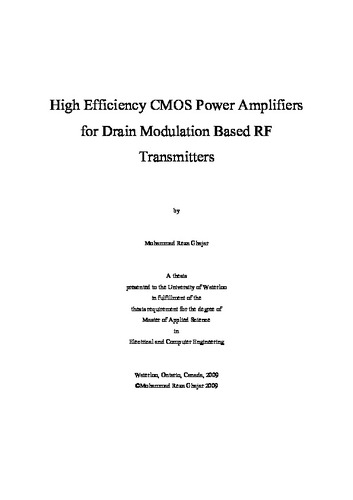| dc.description.abstract | The rapid evolution of wireless communication technologies increased the need for handheld devices that can support dissimilar standards or better user mobility and more battery life. Traditional radio architectures fail to satisfy these challenging features. Software Defined Radio (SDR) is recently introduced to implement a new generation of wireless radios capable of coping with these stringent requirements through software reprogramming. Although the term SDR is widely used, it is still an idealized method and is not implementable using available technologies. Hence, the term “SDR”, has been so far, referring to only partially upgradeable radios. Two current practical solutions substituting SDR are broadband and multiband transceivers.
Radio Frequency (RF) front ends and especially the power amplifier is the main challenge in implementation of software defined radios. Power Amplifiers (PA) dominate the sources of distortions and power consumption in the RF-front end. They are typically operated in linear classes in order to minimize the linearity degradation. However, they lead to poor average power efficiency especially when fed with signals with high Peak to average power ratio (PAPR) such as Wideband Code Division Multiple Access (W-CDMA) and Long Term Evolution (LTE) signals. This is the main cause of short battery life in transceivers. To remedy this issue, some advanced methods like Doherty amplifier and drain modulation based architectures are introduced.
This thesis expounds on the implementation of high efficiency radio transmitters, capable of multi standard operation. The RF amplifier is still one of the main challenges in the realization of these transmitters. In this work, two RF PAs, having multiband and broad band characteristics, were implemented using 0.13µm CMOS technology. The first PA operates at two frequency bands, 2.4GHz and 3.5GHz. The other PA has center frequency equal to 2.4GHz and 600MHz bandwidth, respectively. These PAs are expected to lay the foundation for the realization of high efficiency drain modulation based multiband and broadband transmitters. | en |

